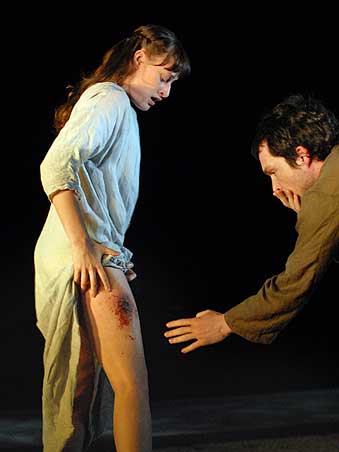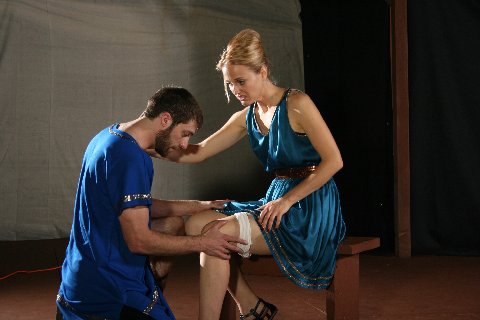The wound is the climactic moment in the marital exchange.
How should it be portrayed onstage? As an act that has already occurred, or should the actress actually stab her thigh as Brutus and the audience look on? Whether an emblem of extreme marital fidelity, matronly Roman virtus (= strength: note that this is a feminine noun in Latin), crazy love, or just plain crazy, no version of the play can be considered complete or accurate without it, or without accounting for it.
Here are some representations of Portia’s gesture by Renaissance painters and in recent theatrical productions. We will add more as we find them.
Michele da Verona, c. 1500-50: Portia's wound in the foot.

 |
Elisabetta Siriani, Portia Wounding Her Thigh, 1664 |
Ercole di Roberti, c. 1490. Wound in the foot.

RSC Production, Stratford-upon-Avon, 2006

 Portia’s Wound
Portia’s Wound